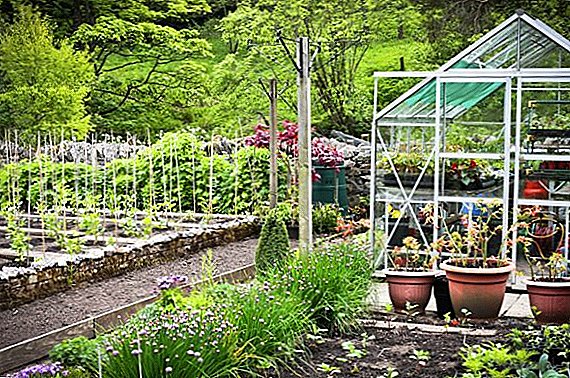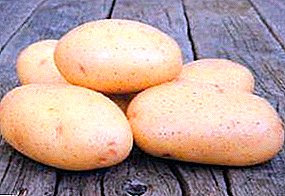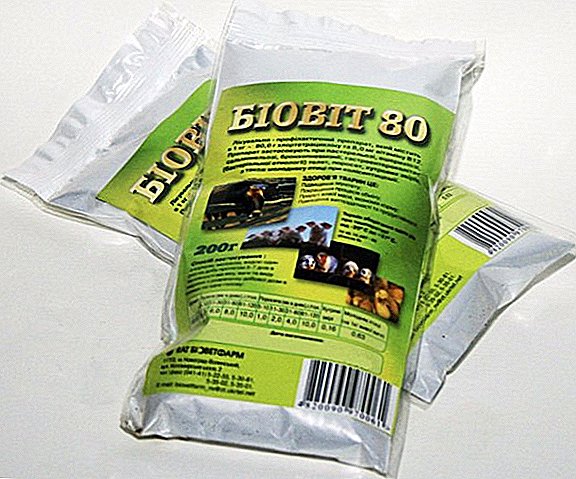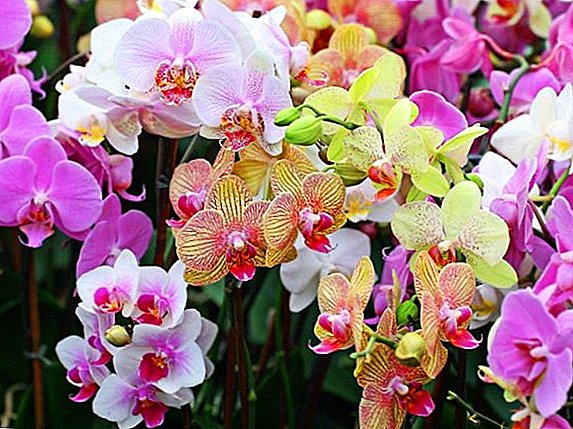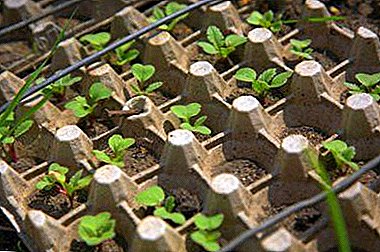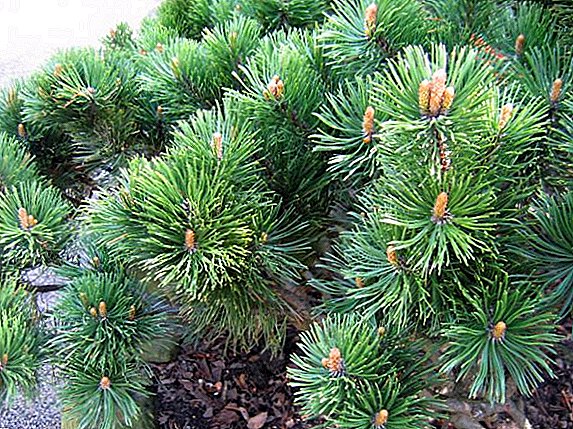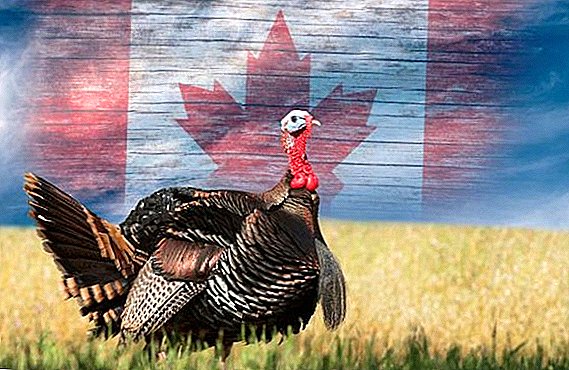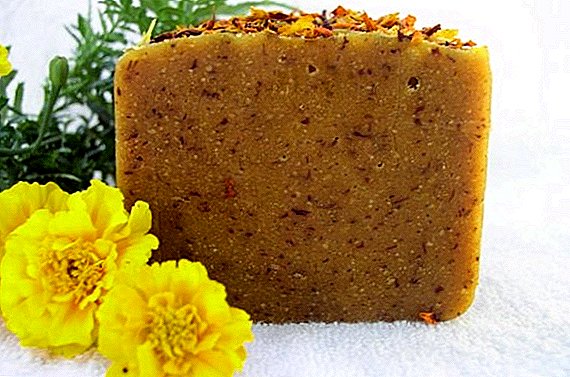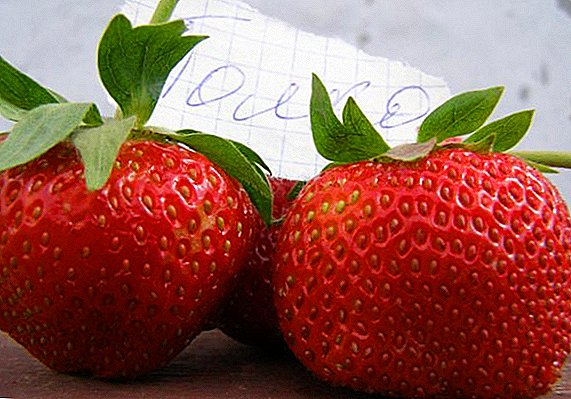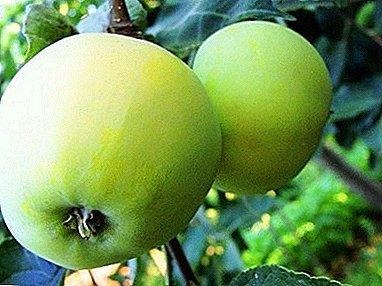
The Moscow variety of apple trees later actively spread in temperate latitudes.
This variety of apples is winter-hardy, easy to clean and has fruits that differ in unsurpassed storage time.
The variety is relatively resistant to the main disease of apple trees - scab.
What kind is it?
The Moscow apple variety is later representative of winter (late) ripening varieties.
The fruits are ready for harvest in late September-early October and have extremely good keeping quality.
With proper care, they may remain intact until the next harvest begins.
Store them advised in cellars and basements.at a temperature of 2 to 6 degrees Celsius. Avoid sudden drops from heat to cold.
For winter varieties also include Nastya, Nymph, Orlovsky synapse, Kandil Orlovsky and Orlik.
Pollination
Pollinated variety, pollinators can act: Sinap Orlovsky, Vityaz, Moscow Winter, Bogatyr, Zhigulevskoe, etc.
Description of the variety "Moscow late"
The apple tree of the Moscow variety is later distinguished by its large growth and large fruits.
 Moscow later is a vigorous tree. When planting a seedling and in the first couple of years of life, it has a wide pyramidal crown shape; when it reaches maturity, the crown changes its shape to a wide oval.
Moscow later is a vigorous tree. When planting a seedling and in the first couple of years of life, it has a wide pyramidal crown shape; when it reaches maturity, the crown changes its shape to a wide oval.
The bark has an unusual greenish-gray tint, the main branches grow vertically, with a slight slope. The foliage is large in size, the shape of the leaves is elliptical, the tip is strongly pointed.
The size of the fruit exceeds the average weight of ordinary apples (most of the fruits of Moscow Late weigh 165 g, some specimens reach 210-235 g), the shape of apples is conical, rounded, the surface is smooth, ribbing is absent.
In adulthood (at harvest), the fruit has a yellow-green color with an unobtrusive pink blush on the side most illuminated by the sun.
At the time of maturation, the color changes to golden, the green tint goes away. The flesh of the fruit has a fine-grained structure, rather dense and rather juicy, the color is white, without admixture of other shades.
The following varieties can also boast with large fruits: Idared, Marat Busurin, Moscow Hrushovka, Orlov and Orlovsky pioneer.
A photo
See below for photos of the Moscow Moscovaya apple variety:





Breeding history
Bred by the work of the breeder S. I. Isaev. Refers to the varieties created by MSU. M. V. Lomonosov. First successfully grown in 1961.
For the breeding of the apple tree of the Moskovskoye variety, two other apple tree varieties were later used: the Northern Synapse and the Cinnamon New. Officially zoned only in 2001.
Growing region
The variety has actively spread throughout the central region and is also found in neighboring areas.
To date, apple varieties Moskovskoe later can be found in Central Russia, Ukraine and Belarus.
In these regions, the varieties are also successfully grown: Uslada, Autumnal undersized, Winter Beauty, Nadezhda and Antonovka ordinary.
Yield
 It is noteworthy that initially it was assumed that Moscow later comes to fruition in the tenth year after planting - it was during this period that the first fruits of the pioneer tree were given. But it turned out that the seedlings bear fruit faster, for the 6-7th year.
It is noteworthy that initially it was assumed that Moscow later comes to fruition in the tenth year after planting - it was during this period that the first fruits of the pioneer tree were given. But it turned out that the seedlings bear fruit faster, for the 6-7th year.
Fruits appear at the end of September, the average yield per tree is 160 kg.
In nurseries from one hectare of land planted with the Moscow Late, up to 110 centners of the crop are harvested.
Planting and care
An apple tree of the Moscow variety does not require special care later; it fully complies with the standard procedures for the care and planting of tall apple trees. Consider more.
When you choose a sapling, pay close attention to the condition of the tree trunk. If the trunk is severely curved, the root system is obviously damaged or the root neck is not visible, you should not buy a tree.
There is a great chance that the sapling will not be taken at all or will grow deformed, which will affect the quality of the crop.
After buying a seedling, it must be artificially shortened in growth (cut) to 80 cm. If the roots are shorter than 40 cm, cut even lower than 80 cm, since small roots will not be able to sufficiently nourish the crown.
Before planting, straighten the root system of the seedling, remove the damaged roots, disinfect the cutoff area with a decoction of the garden.
If the roots of the seedling are too dry, try putting the roots into the water at night, then the plant will take root better and faster.
It is necessary to make sure that the landing site of young trees has drainage. It is necessary to dig a landing hole, while separating the upper and lower layers of soil. It is recommended to lay a mixture of the upper soil layer and fertilizer additives (humus, compost) at the bottom of the planting hole.
 It is forbidden to put fresh manure in the garden hole. The fertilizer mixture is filled with the top layer of soil without impurities for 5-6 cm, so that the seedling roots are not directly in contact with fertilizers. Such contact can cause root burn.
It is forbidden to put fresh manure in the garden hole. The fertilizer mixture is filled with the top layer of soil without impurities for 5-6 cm, so that the seedling roots are not directly in contact with fertilizers. Such contact can cause root burn.
A mixture of fertilizer and soil should form a kind of mound on which the seedling is placed.
A peg is driven in near the seedling, on which the tree is tied up to avoid deformation of the trunk under the weight of the crown.
The roots of the seedling are filled with layers, in the process of seedling it is necessary to shake a little, you can also moisten the soil layers for a more tight fit. After planting, it is recommended to water the tree with 2-3 buckets of water.
One of the most important moments in the care of the Moscow late - is watering. Moscow needs systematic and abundant irrigation, this is especially important during the flowering period and in dry times.
Crop a tree with sod or a carpet of clover, they will retain the desired concentration of moisture.
Pruning plays an important role in the proper realization of the vital forces of the tree. In this regard, the next year after disembarkation, they begin to artificially form the crown.
Young shoots and sprouts that grow inside the crown or those branches that grow at an acute angle are shortened. If the sapling began to bloom in the first years of life, before his sixth birthday, it is recommended to cut the flowers. Also in the spring all unfit, broken, rotten branches are pruned.
It is imperative to keep the soil clean, that is, to pull out all the weeds, loosen and weed. Useful fertilizer manure and mowed grass.
In the spring period, your tree is fed with saltpeter, urea, and ash.
Diseases and pests
Apple crab
The disease is serious, can lead to the death of the tree. During the illness, thickening forms on the trunk, crown and branches, after which a decaying process begins in the growths.
Damage can not only open, but also closed (bark exfoliates after rotting). Around the lesions, if left untreated, a red border appears, to which the lesion area further increases.
Treatment: If the disease is detected in the initial stage, the damaged areas should be smeared with either a garden broth or Bordeaux liquid. Damaged branches cut and burn outside the garden.
Scab
 Disease caused by fungal spores. Cold fungal infection "sits out" on the foliage uncleared and rotting from autumn. The first disease affects the spring young foliage and shoots.
Disease caused by fungal spores. Cold fungal infection "sits out" on the foliage uncleared and rotting from autumn. The first disease affects the spring young foliage and shoots.
Manifested in the form of yellowish, fairly bright spots, with oily sheen.
If not treated in time, the leaves dry out, and the ailment goes to the emerging fruits, buds, ovaries.
Treatment: After autumn leaf fall the tree is treated with urea in preventive measures. There are also specialized drugs that process an already diseased tree: “Scor”, a solution of Bordeaux liquor (it is processed three times, once with 3%, two times with 1%), Cumulus, Scor and others.
Mealy dew
The disease is serious, as it affects absolutely all vital parts of the tree. Mostly noticeable on the leaves, it appears as a white bloom, resembling flour or dust, at advanced stages the bloom changes color to brown.
If left untreated, the leaves dry up, and the disease easily affects the inside of the trunk.
Treatment: Damaged areas are trimmed and removed away from the garden area. The tree is treated with a solution of the drug "Topaz" (2 ml per 10 liters of water), you can also use the "Skor".
The solution is thoroughly washed with wood, and at the end of fruiting it is treated with Bordeaux liquid.
Do not forget about the pests of the apple orchard and take timely preventive measures against the codling moth and mining moth, fruit sapwood, haws and silkworms.
To care for the Moscow variety apple tree later you will not need much effort. The variety is quite unpretentious, has abundant yields, high taste qualities of fruits and long shelf life.
The only minus identified today is the tendency of the crown to thicken.


